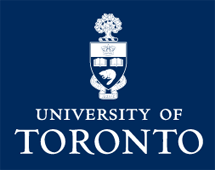Abdominal Organ Transplant Fellowship at the University of Toronto and Toronto General Hospital
The Toronto Transplant & HPB Fellows 2024-25

Left to Right: Drs. Ahmer Irfan, Pablo Achurra, Daniel Kilburn, Taylor Coe, Su Kah Goh, Farah Ladak.
Welcome to our Fellowship Programs. The University of Toronto has a legacy for being at the forefront of research, innovation, and education in the fields of transplantation and hepatopancreatobiliary (HPB) surgery. Our respective programs are among the largest in North America based on clinical volumes, and we have a proud history of training many of the leaders in surgery over the last 38 years. We offer two accredited programs: a fellowship council-accredited HPB surgical track program and a combined ASTS-accredited abdominal transplantation surgery track program.
As junior fellows, all trainees are immersed in both disciplines gaining a unique hybrid, high volume experience. As second year fellows, trainees become more focused gaining in-depth exposure within their respective clinical track. They are afforded opportunities to participate in complex HPB and minimally-invasive surgery, and to be a part of one of the largest pediatric transplantation and living donor liver transplant programs in North America. In addition to an outstanding operative experience, the fellow’s knowledge is further enhanced through participation in a robust academic curriculum of teaching seminars and by in-depth training in the pre- and postoperative management of these complex patients in both the inpatient and outpatient settings.
We also offer a multitude of opportunities to participate in both clinical and basic science research with many of our investigators being world leaders in their respective fields. We are proud to continue our legacy of training the future generation of academic transplant/HPB surgeons. We invite you to further explore our website and see how our program may enhance your training and in turn help shape the future of transplantation, HPB surgery, and cancer care.
Distinguishing Features of the Fellowship
Clinical Experience
Transplant
During the first year, the Transplant and HPB Fellowships are integrated. The ASTS required case volume are exceeded through:
- Pediatric, small intestinal and multivisceral transplant
- Laparoscopic Living Donor Nephrectomy (40+ per year)
- Pre-op planning & Volumetric measurements using Myrian workstations
- Donation after Neurologic & Cardiocirculatory Death
- Vascular access
- Transplant Clinics
The second year focuses on complex transplant procedures: re-transplants, Living Donors & Transplants, split-liver, multiviscerals, and pediatric transplants.
Hepato-Pancreato-Biliary Surgery
During the first year, the ASTS & AHPBA required case volumes are exceeded through:
- 6-8 elective HPB ORs per week (with 10 Transplant & HPB Surgeons)
- 150+ liver resections, 100+ pancreaticoduodenectomies, 80% oncology
- Laparoscopic HPB Surgery
- 3-month assignments with HBP & Transplant surgeons and Surgical Oncology Clinics
Education
The Fellowship program offers multiple opportunities for additional learning through:
- Fellowship Exchange Program (for Fellows in their second year)
- Transplant and HPB Seminar Series
- Transplant Conferences: Live Donor, Listing, and Quality
- Multi-Organ Transplant Rounds & Invited Professors
- Journal Clubs (offered for both HPB and Transplant)
- HBP Conference, Hepatoma Review Board, Surgical Oncology Tumor Board
Research Opportunities
For Clinical and Outcomes Research, Fellows can expect one project in the first year, and multiple projects in their second year of study.
There will be Basic Science opportunities for laboratory-based research on the topics of:
- Ischemia/reperfusion
- Genomics/proteomics
- Dendritic cells
- Tolerance
- Stem cell biology
Research in education is also offered.
Lifestyle
Fellows will experience the advantages of a “large” Fellowship program with 7 to 8 Transplant and HPB Fellows:
- On-call scheduling and cross-coverage
- Facilitates time off without compromising clinical experience
- Camaraderie




